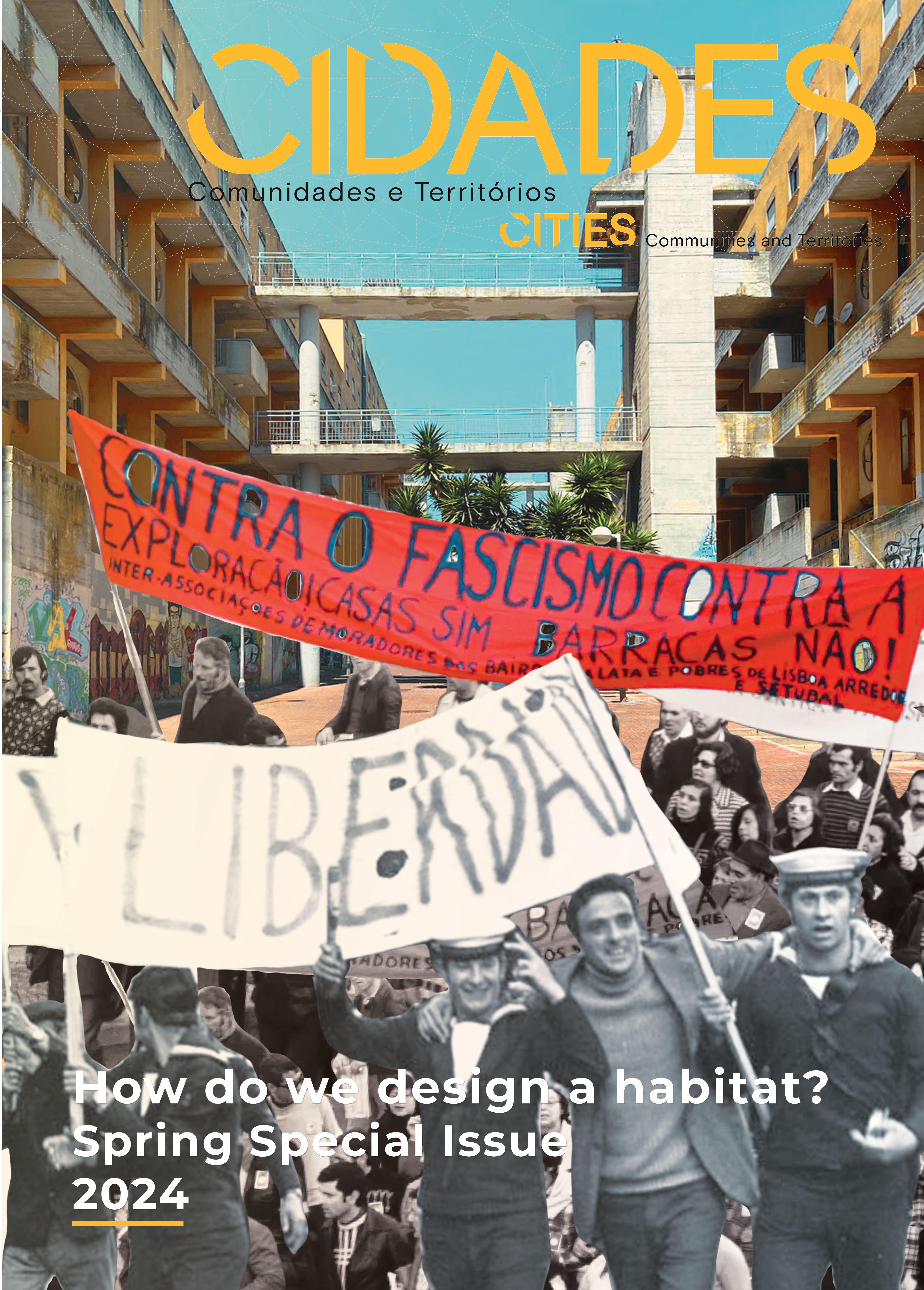Marvila LAB: imagining collective housing in Lisbon
Keywords:
Marvila, regeneração urbana, reuso, habitação coletiva, tipologia edificadaAbstract
Farms, factories, silos, cranes, old warehouses, convents, streets, paths, passages, small squares... from large infrastructures to the fragmented housing fabric, the urban space of Lisbon's eastern riverfront is constituted as a complex and extremely heterogeneous.
Therefore, and given the need to precede the disintegration and irreversible discontinuity between urban fabrics, memories and urban elements in this area of the city, it is important to reflect on innovative urban intervention processes that know how to interpret the typological richness of the place and that provide answers to current problems such as the lack of housing and its relevance in the transformation of public space.
Taking an international design workshop as a framework, the article presents the results developed by this pedagogical experience that takes Marvila as a laboratory to reflect on housing systems that break the rigid limits between architectural objects and the city. The workshop draws on material produced by the research project “Building Typology” (FCT: PTDC/ART-DAQ/30110/2017), to propose urban and architectural strategies for recycling, reuse and transformation that suggest reactivation of abandoned spaces and new connections to buildings and public space. The design studios were challenged to design collective urban habitats that, based on the imagination of housing spaces, constituted architectural systems of transition between public space and private space.
Five distinct types of abandoned buildings located in the eastern part of Lisbon – warehouse, convent, factory, palace, working-class villas – were adopted as the object of study to rethink five alternative ways of living: Atelier House, Minimum House, Common House, Dispersed House , Recovery House. The workshop sought to systematize housing hypotheses where the building typology and the housing program are the support for the creation of architectural-urban scenarios that reconfigure the surrounding urban habitat.
References
Christ, E., Gantenbein, C. (2012). Typology. Hong Kong, Rome, New York, Buenos Aires. Review No. II. Zurich: Parks Books.
Dias Coelho, C., Fernandes, S. (2022). Parallels. Building typology: Portugal. Lisboa: Academia de Escolas de Arquitectura e Urbanismo de Língua Portuguesa.
Dias Coelho, C. (coord.) (2013). Os Elementos Urbanos. Lisboa: Argumentum
Dias Coelho, C. (2002). Complexidade dos traçados. Lisboa: FAUTL [tese de doutoramento]
DOGMA (2022). Living and Working. Cambridge, MA: MIT press.
Espegel, C., Cánovas, A., Lapuerta, J. M. (eds.) (2022). Amaneceres Domésticos. Temas de vivenda colectiva em la Europa del siglo XXI. Madrid: Fundación ICO
Gracia, F. (2001) [1992]. Construir en lo Construido. La Arquitectura como modificacion, S/L: Editorial Nerea.
Lechner, A. (2021). Thinking Design Blueprint for an Architecture of Typology. Zurich: Parks Books.
Monteys, X. (2013a). La Casa. In X. Monteys, Rehabitar. La casa, el carrer i la ciutat (pp. 20-33). Madrid: RecerCaixa.
Monteys, X. (2013b). O Edifício Comum: Casas lisboetas. In C. Dias Coelho, Os Elementos Urbanos (pp. 190-207). Lisboa: Argumentum.
Monteys, X. & Fuertes, P. (2011). Casa Collage. Un ensayo sobre la arquitectura de la casa. Barcelona: GG.
Muratori, S. (1959). Studi per un’operante storia urbana di Venezia. Roma: Istituto Poligrafico dello Stato.
Panerai, P., Castex, J., Depaule, J-C. (1997). Formes Urbaines: de l’îlot à la barre. Marseille: Parentheses.
Rossi, A. (2001 [1966]). A Arquitectura da Cidade. Lisboa: Edições Cosmos.
Rossi, A. (1976). La città analoga: távola. Lotus International [Milão], 13, pp. 5-9.
Rowe, C. (1978). Collage City. Cambridge, MA: MIT press
Schimd, S. (2019). A History of Collective Living. Forms of Shared Housing. Basel: Birkhauser
Solà-Morales, M. (2010). The impossible project of public Space. In J. Carrera, M. Angles, R. Puig Torres, (coord.) Favour of Public Space, Ten Years of the European Prize for Urban Public Space 2000-2010. Barcelona: Actar, CCCB, 2010
Teije, K. (2002). The minimum dwelling. Cambridge: MIT press
Viganò, P. (2019). Porosity: Why This Figure Is Still Useful. In S. Wolfrum (coord.) Porous City. From Metaphor to Urban Agenda (pp. 50-55). Basel: Birkhäuser
Wietzorrek, U. (2014). Housing +. On Threshols, Transitions and Transparencies. Basel: Birkhäuser
Zumthor, P. (2006). Atmosferas. Barcelona: GG.
Downloads
Published
Issue
Section
License
Copyright (c) 2024 João Silva Leite, Sérgio Fernandes, Rui Justo

This work is licensed under a Creative Commons Attribution-NonCommercial-NoDerivatives 4.0 International License.
Cidades, Comunidades e Territórios by DINÂMIA'CET-IUL is licensed under a Creative Commons Atribuição-Uso Não-Comercial-Proibição de realização de Obras Derivadas 4.0 Unported License.Permissions beyond the scope of this license may be available at mailto:cidades.dinamiacet@iscte.pt.






